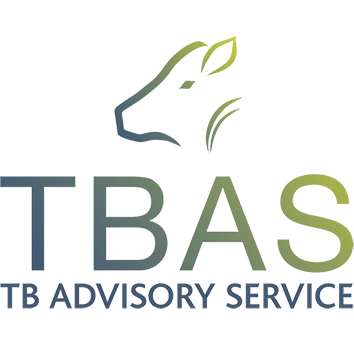Written by Sarah Tomlinson BVM&S MRCVS, Westpoint Farm Vets, TBAS advisor and Technical Director.
In June, I had the pleasure of rekindling an old relationship with a dairy farming family I had known in my very first job.
I pulled into the yard and my life flashed back 19 years, to the beginning of my veterinary career. A lot has changed in this time, not least, the prevalence of bovine TB in the county.
The initial part of my TB Advisory Service (TBAS) visits always start with a chat about the farm. TBAS has developed an app that leads the advisors through a series of questions. We look for evidence of potential TB risk pathways, such as purchasing behaviour, risk from neighbours, previous TB on the farm and those risks posed by potentially infected wildlife, predominantly badgers.
Next, we go for a walk round the sheds and feed areas in the yards, then move further afield into nearby paddocks, again to look at TB risk and potential solutions.

This farm had no history of TB, despite there having been quite a few breakdowns in the last few years within the area. Their desire for a TBAS visit was to make sure they were doing everything they could to keep it that way, but also to understand what the impacts a TB breakdown would have on their farm, and how they could limit them by being fully informed of their options whilst under movement restrictions.
It soon became clear to me why they had not had a TB breakdown. They don’t buy stock in (except a one off purchase a few years ago of some fancy baby heifer calves from a family friend’s dispersal sale; if you are going to buy in replacements, buying in young is the least risky). They have had no cattle grazing neighbours, until recently. They use all their own equipment including muck spreaders and never lend to family or friends. The yard was one of those very traditional Derbyshire farmyards with the house on one side and then small stone buildings making up the perimeter of the yard, so was pretty badger proof. All concentrate fed was stored in silos, and the silage clamps were enclosed in the yard. Water troughs in the fields were generally over one meter high, which means badgers can’t access them.
However, there were still risks identified on the farm and the family were keen to tackle them.
Recently, their neighbour had started buying stores from the local market and grazing them in a field next to the heifers. As on a lot of farms in Derbyshire, they have very well-maintained dry-stone walls, which are great at keeping stock in, but to allow cattle to have nose to nose contact. The family were aware of the risk from these neighbouring cattle, so were fully committed to running an electric fence away from the wall to provide a 3m gap to reduce the disease risk, not just from bTB, but other infectious diseases such as IBR and BVD.

In the fields, there was clear evidence of badgers. The farmer pointed out the setts she knew were on the farm and we could clearly see runs coming across the grass. On TBAS visits, I always look on the ibTB website with the farmer to check what the local bTB situation is like. If there is bTB on farms within a few miles (so within a badger territory) it’s often best to assume there will be infected badgers – better to assume this than hope they aren’t than do nothing to reduce cattle-to-badger contact.
The grazing cattle are given supplementary feed throughout the year, which although isn’t ad lib, is fed in troughs on the ground. Even if feed is “cleaned up” every day, it can still attract badgers to the site, licking and snuffling around, producing a potential point of bTB transmission. We agreed that when the troughs needed replacing, they would purchase troughs on legs, to allow the cattle to fed at one-metre height.
The farm also grazes their own flock of sheep on the pastureland, often with the cattle. The farm does use mineral licks and were happy to raise them for the cattle but just like the water troughs in those paddocks, would be unable to raise them to one metre due to the sheep needing access. This is just one risk we had to accept we couldn’t control very simply.
The yard, as I said, was pretty badger proof, with buildings and silage clamps making up most of the perimeter. It would have been fairly straight forward to sheet the gates and run rubber underneath them to block the gaps. However, as the feed was stored in badger proof containers, are badgers even visiting the yard? Evidence shows that by preventing access to feed and water in cattle housing, badgers have no reason to visit. It was agreed that the family would install a few wildlife cameras at the potential entry points to monitor what was actually visiting the yards, to see if the time, money and effort to badger-proof the gates was necessary.
Finally, we discussed what would happen should a reactor be found. For many of those that have never had a bTB breakdown, the thought of this unknown process is worse than the test itself. I explained the movement restrictions and the timeline for the repeated skin tests and also the use of the gamma blood test that we currently have in Derbyshire.
As the farm would normally sell black and white bull calves at market under 42 days of age and sell beef cross stores between 1 and 2 years of age, we discussed the options they would have in the case of a breakdown. The cattle movement restrictions are often the biggest concern for farmers, given they have the biggest financial consequences.
One option would be to decrease the number of black and white bull calves, by using more sexed semen. As the daughter was now in charge of the breeding selection on farm, this was already happening to some extent and the plan was to use more of it.
We looked on the ibTB website again to look at what AFUs there were locally (Approved Finishing Units that can take bTB restricted cattle). Luckily, there were a few not too far away. Orange Markets are also an option for selling TB restricted stock. The plan is to make a few calls (contact details on the TB Hub website) and discuss what sort of cattle they wanted, what age and importantly what sort of price they pay! This means the farmer is fully informed should the worst happen.
In all, it was a really valuable visit. I left my report containing four key recommendations and left a family content that they were doing many things well, but now with the knowledge to change some things to decrease their TB risk even further.
But even more importantly, and much more importantly for me, I left a family believing that TB was controllable and that a TB breakdown wasn’t just down to bad luck. I hope this family will now be in a much better place, both physically and mentally, to deal with TB should the worst happen.

